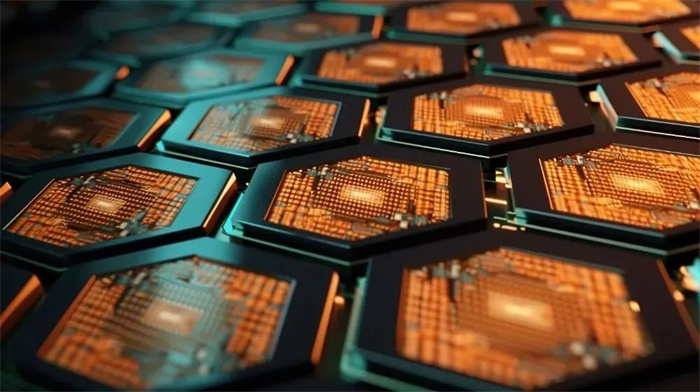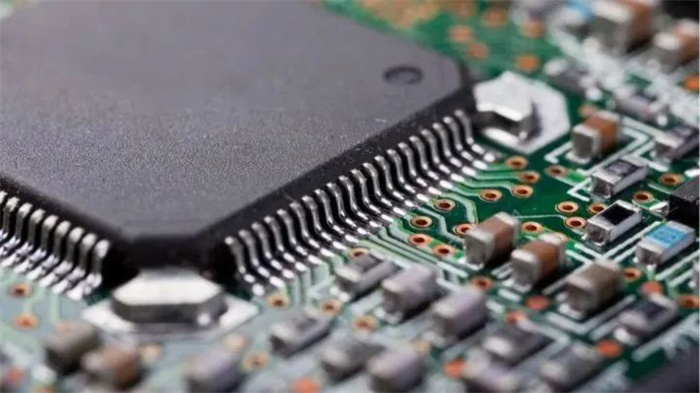
With the booming development of AI technology, the demand for advanced packaging has sharply increased, leading to severe challenges in the production capacity of this field. Faced with this production capacity bottleneck, leading companies in the industry such as TSMC, Sunlight, and Huatian Technology have announced plans to expand their production capacity. This wave of expansion is expected to greatly drive the growth of upstream material demand, opening up new development opportunities for related material suppliers.
In order to fully utilize this historic development opportunity, many A-share companies are strengthening their core businesses or expanding across borders through mergers and acquisitions strategies. Through observation, recent M&A cases have generally focused on two types of target companies: leading enterprises that dominate the segmented market, and innovative enterprises that master key "bottleneck" technologies. Through mergers and acquisitions, these enterprises can quickly absorb new technologies, products, and market channels, achieve optimized resource allocation and synergies, and thus occupy a more advantageous position in fierce market competition.
Giant invests heavily in advanced packaging
As Moore's Law gradually slows down, relying solely on process upgrades to increase crystal density becomes increasingly inadequate in terms of cost-effectiveness, highlighting the importance of advanced packaging technology. Through innovative packaging methods, advanced packaging technology can achieve tighter integration between chips and optimize electrical connections, thereby meeting the stringent requirements of cutting-edge technologies such as artificial intelligence and high-performance computing for chip performance.
With the booming development of high-end consumer electronics, artificial intelligence, data centers and other application fields, the dependence on advanced packaging technology is also constantly deepening. In the segmented field of advanced packaging, FCBGA, FCCSP, and 2.5D/3D packaging technologies are expected to become mainstream choices in the market by 2024. At present, mainstream AI chip companies such as Nvidia and AMD mostly rely on TSMC's 3nm process and CoWoS packaging technology. However, facing the explosive growth of AI demand, TSMC's production line capacity for 2025 has been partially booked, which will undoubtedly push up price levels. It is reported that Nvidia will still account for as much as 50% of the overall CoWoS supply in 2025. meanwhile, AMD、 The demand for CoWoS from companies such as Microsoft, Amazon, Google, and Intel is also continuously growing, further driving the rapid development of the advanced packaging market.
TSMC Chairman Wei Zhe jia has pointed out that the demand for advanced CoWoS packaging from customers far exceeds the supply. Although TSMC has increased its CoWoS production capacity by more than twice this year, it is still difficult to meet market demand. To meet the urgent needs of customers, TSMC is actively expanding production. According to reports, the company plans to build 10 new factories worldwide next year, focusing on 2nm process technology and chip on wafer packaging (CoWoS) technology. Among them, three factories will focus on the advanced packaging field, including transforming the acquired Innolux AP8 LCD panel factory into a packaging factory, and building a new packaging factory in Chiayi Science Park.
In addition, TSMC will also hand over some of the overflow orders to packaging and testing factories such as Siliconware and Sunlight to share. These subcontractors have initiated capacity expansion projects for WoS or CoW processes, and multiple advanced packaging giants have also announced plans to expand production. Recently, leading companies in the semiconductor industry such as Sun Moon Holdings, TSMC, Intel, Samsung, Tongfu Microelectronics, Huatian Technology, Yongsi Electronics, and Jingfang Technology have announced that they will invest resources in advanced packaging.

Recently, the advanced packaging market has shown a thriving trend, attracting the attention and investment of numerous semiconductor industry giants. On September 22nd, the second phase of the Huatian Nanjing Integrated Circuit Advanced Packaging and Testing Industry Base project was laid, with an investment of up to 10 billion yuan. The future products will focus on cutting-edge fields such as storage, RF, computing power, and AI. Subsequently, on October 4th, TSMC signed a memorandum of cooperation with American packaging and testing giant Ankou, in which both parties will work together to integrate advanced packaging technologies such as InFO and CoWoS to meet the strong production capacity demand of common customers such as AI.
On October 9th, Sun Moon Semiconductor's new K28 factory also held a groundbreaking ceremony, which will focus on advanced packaging terminal testing and high-performance computing of AI chips. The next day, the Tongfu Microelectronics Advanced Sealing and Testing Project, with a total investment of 3.52 billion yuan, officially kicked off its construction. The products produced by the project are expected to be widely used in key fields such as high-performance computing, artificial intelligence, and network communication.
In addition, Changdian Technology has successfully completed the delivery of the 80% equity project of Shengdi Semiconductor (Shanghai), a storage chip packaging and testing factory, after its acquisition. Meanwhile, Changdian Technology is accelerating the construction of its first advanced packaging and manufacturing base for automotive grade chips in Lingang, Shanghai. The 2.5D packaging platform jointly developed by Qiyi Mole and Zhiyuan Technology has also successfully entered the mass production stage, while Yongsi Electronics plans to invest 1.46 billion yuan to increase Fan out and 2.5D/3D packaging capacity.
The trend of advanced packaging market has also stimulated chip leading enterprises to increase their layout. On October 28th, Intel announced that it will expand its packaging and testing base located in Chengdu High tech Zone. In January 2024, Intel announced that its first 3D packaging technology, Foveros, had achieved mass production. At the same time, Samsung is actively developing its 3D packaging technology X-Cube and plans to achieve mass production within the year.
With the expansion of production by numerous manufacturers, the industry expects the advanced packaging market to experience rapid growth. According to Yole's forecast, global advanced packaging revenue has reached $37.8 billion in 2023 and is expected to grow to $69.5 billion by 2029, with a compound annual growth rate (CAGR) of 10.7% from 2023 to 2029. Although there is still a certain gap between China and the international advanced level in the field of advanced packaging, with the continuous breakthroughs of domestic manufacturers such as Changdian Technology, Huatian Technology, and Yongsi Electronics in advanced packaging technologies such as 2.5D and 3D, domestic manufacturers are expected to play an increasingly important role in the global semiconductor market competition.
Frequent cases of mergers and acquisitions
Numerous industry chain enterprises have flocked to the field of advanced packaging technology, highlighting its indispensable role in the modern electronics industry and opening up new growth opportunities for the upstream materials market. In the process of gradually evolving from traditional packaging methods to advanced packaging technologies such as SiP, 2.5D, and 3D, the iterative upgrading of technology is accompanied by an increase in process steps, which in turn drives a significant increase in demand for advanced packaging materials. In addition, multiple factors such as the surge in demand for computing chips, the recovery trend of the semiconductor industry, and the expansion of advanced packaging capacity by large factories have jointly promoted the rapid growth of upstream material demand.
According to statistics, the global advanced packaging market size has reached approximately 43.9 billion US dollars in 2023, achieving significant growth compared to the previous year. In the Chinese market, with the country's strategic emphasis and active layout on advanced packaging technology, as well as the increasingly perfect semiconductor industry chain, the market size of advanced packaging materials is also showing a vigorous development trend.
However, it is worth noting that the dominant market share in the global semiconductor materials market is still firmly held by Japanese and European and American manufacturers, especially in core material fields such as silicon wafers, masks, photoresists, target materials, and epoxy sealants. Foreign manufacturers occupy the vast majority of the market share. In contrast, the overall localization rate of domestically produced semiconductor materials is only 15%, with the localization rate of packaging materials being less than 30%. Even for electronic special gas materials with relatively high localization rates, their proportion is less than 40%; The domestication rate of photoresist materials is as low as less than 5%.
In order to enhance the competitiveness of the domestic semiconductor materials field and under the promotion of favorable policies, some companies in the A-share market are actively engaged in the research and development and production of advanced packaging materials. By acquiring advanced technology through mergers and acquisitions, these enterprises are committed to enhancing their technological barriers and resource advantages in order to occupy a more advantageous position in future market competition.

Taking the acquisition of Huawei Electronics by Huahai Chengke as an example, Huahai Chengke's main business covers two major areas: epoxy plastic sealing materials and electronic adhesives. The core product of Huawei Electronics, the acquired company, is epoxy plastic packaging material, which is an indispensable key material for integrated circuit packaging. In the global epoxy plastic sealing material market in 2023, Huawei Electronics ranks third in sales and fourth in sales. At the same time, in the domestic market, its sales and sales have remained at the top, demonstrating its leading position in the industry.
Similarly, AAMI, acquired by Zhizheng Corporation, is also a leader in the industry. As one of the top six international lead frame manufacturers in the world, its revenue has entered the top five in 2023 and jumped to the fourth place in the world by the first half of 2024, while maintaining a leading position in China. Yanggu Huatai acquired the core supplier position of Huawei HiSilicon through the acquisition of Bomi Technology. The photosensitive polyimide (PI) material produced by Bomi Technology is a core material in advanced semiconductor packaging, which has successfully helped Huawei solve the technical bottleneck problem of packaging materials.
The Tongge Micro acquired by Woge Optoelectronics focuses on the research and production of glass based chip board level packaging carriers. Glass substrate is regarded as a key material supporting the explosive growth of AI chips and is also the core of the next generation of advanced semiconductor packaging technology. From the above merger and acquisition cases, it can be seen that the acquired party either holds a leading international or domestic market share, or has the ability to solve bottleneck technology, breaking the foreign technology monopoly.
Through mergers and acquisitions, the acquiring party not only achieved technological complementarity, but also leveraged synergies, significantly enhancing the company's core competitiveness. In addition to mergers and acquisitions, domestic manufacturers have also continued to make breakthroughs in the field of advanced packaging materials. For example, after obtaining bulk orders for semiconductor packaging PI products, Dinglong Co., Ltd. successfully sold its second advanced semiconductor packaging material - temporary bonding adhesive product. Strong New Materials has made significant breakthroughs in advanced packaging PSPI, becoming the only domestic manufacturer to achieve mass production and supply. Feikai Materials has made significant progress in the use of tin balls for high-end IC packaging, as well as Lianrui New Materials in the use of Low alpha micron sized spherical silicon micro powders and submicron sized spherical silicon micro powders for storage chip packaging.
Industry insiders point out that the trend of advanced packaging is still ongoing. Against the backdrop of Moore's Law slowing down, innovation in advanced packaging materials and architecture will become an important driving force for sustained innovation in the semiconductor industry. With the continuous emergence of emerging technologies, the market prospects for advanced packaging are vast. At present, it is the golden period for enterprises to focus on advanced packaging technology. In the future, major manufacturers will continue to deepen their technology in order to seize the opportunity in the fierce market competition.




